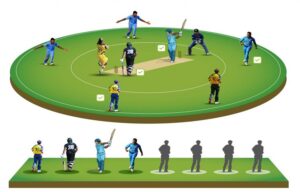OLED vs. LED vs. LCP: How to Choose the Right Screen for Your Needs

Screens shape almost everything about how we use a laptop. They decide how sharp your movies look, how accurate your colors are, and how long your battery lasts. Even the same computer can feel completely different depending on its display type.
When comparing various laptops, you’ll often see OLED, LED, or LCP listed in the specs. These terms describe how each screen makes light and color. Knowing the difference helps you pick a laptop that matches what you do most, from gaming to studying to creating.
OLED, LED, and LCP Explained: What’s Inside Your Screen?
Not all screens are built the same. The type of display inside your laptop affects everything from brightness to cost. Here’s how each works and what kind of user benefits most.
Organic Light-Emitting Diode (OLED)
OLED screens use pixels that light themselves. Each one turns completely off for deep blacks and shines individually for vivid color.
- Self-Lit Pixels: Each pixel makes its own light, creating perfect contrast and realistic shadows.
- Rich Color Depth: Produces accurate tones for design, film, and creative work.
- Fast Response Times: Keeps motion sharp during games or fast-paced scenes.
- Energy Use Varies: Uses less power for dark content, more for bright white screens.
- Premium Quality: Often the most expensive but delivers the best visual experience.
OLED displays are ideal for anyone who values clarity and color precision. Designers, photographers, and gamers often choose OLED because every frame looks cleaner and more lifelike.
Light-Emitting Diode (LED)
LED screens use backlighting behind a liquid crystal layer. This design gives off consistent brightness and works well in almost any light.
- Bright Backlight: Handles daylight and office lighting with ease.
- Energy Efficient: Uses less power than older fluorescent LCD panels.
- Balanced Cost and Quality: Delivers strong visuals at a mid-range price.
- Versatile: Appears in most modern monitors and laptops.
- Reliable Lifespan: Durable, long-lasting, and low maintenance.
LED displays are the dependable middle ground. They balance quality, price, and power efficiency, making them the go-to for students and professionals who need an all-purpose machine.
Liquid Crystal Panel (LCP)
LCP screens use a liquid crystal panel as the foundation for many LCD-based displays. The panel itself controls how light passes through, creating the image you see. It is a reliable, cost-effective option found in many laptops and monitors.
- Core Display Layer: The LCP is the internal panel that controls light transmission in an LCD system.
- Affordable: Common in budget-friendly laptops and entry-level monitors.
- Durable: Handles long hours of use with minimal degradation.
- Consistent Performance: Provides steady brightness and balanced color.
- Long Lifespan: Reliable for extended daily use without burn-in risk.
An LCP screen offers good image quality at an approachable price. While it may not reach the contrast or color depth of OLED, it delivers long-term stability and efficiency that make it a smart choice for everyday computing.
What About LCP vs. LCD? Are They the Same?
A “Liquid Crystal Panel” (LCP) and a “Liquid Crystal Display” (LCD) are often mentioned together and sometimes treated as synonyms, but they describe slightly different things. Knowing the difference helps clarify what you are actually seeing when reading laptop specs.
- Liquid Crystal Display (LCD): The entire display assembly, including the liquid crystal panel, backlight system, driver circuits, housing, and sometimes a touchscreen layer.
- Liquid Crystal Panel (LCP): The core layer where liquid crystals sit between sheets of glass and electrodes. It modulates light to form images but does not include lighting or control components.
The LCP is part of every LCD. It creates the image, while the LCD also includes lighting, power, and housing. When consumers refer to “LCD screens,” they typically mean the complete unit. Manufacturers may call the glass and liquid crystal layer alone the “panel.”
In short, every LCD contains an LCP, but the LCP by itself is only one part of the full display.
How Screen Type Impacts Daily Use
The differences between OLED, LED, and LCP become obvious in day-to-day tasks. Your lighting environment, work habits, and visual preferences all play a role in which display feels best. These same principles apply to computer monitor technology, where similar trade-offs exist between contrast, brightness, and power use.
Brightness and Visibility
Each display type performs differently depending on your environment.
- LED and LCP screens stay bright under direct light or in open office spaces.
- OLED performs best in controlled lighting or dim rooms where contrast stands out.
- LED’s strong backlight makes it a clear winner for outdoor or high-glare conditions.
If you use your laptop near windows or in classrooms, LED or LCP panels will keep images visible and crisp. OLED looks best when the room lighting is even or low.
Color, Contrast, and Detail
Color quality varies widely by screen type.
- OLED produces true blacks because pixels turn off completely.
- LED displays offer strong, balanced colors but not full black depth.
- LCP panels show neutral tones that are fine for casual viewing.
For color-critical work like design or photo editing, OLED offers unmatched precision. LED displays come close, but LCP screens prioritize consistency and price over high-end visuals.
Eye Comfort and Blue Light
Screens affect more than visuals. They influence comfort during long sessions.
- OLED panels emit less blue light, which can reduce eye strain.
- LED and LCP displays often include blue-light filters or reading modes.
- Maintaining consistent brightness levels is key for reducing fatigue.
Anyone spending long hours on spreadsheets, code, or homework should pay attention to comfort features. A display that minimizes eye fatigue can make extended use much easier.
Battery Life and Power Draw
Display technology also changes how long your laptop runs unplugged.
- LED and LCP screens use less energy when displaying bright backgrounds.
- OLED uses less power in dark mode or when showing video.
- Power use depends on brightness settings and the type of content you view.
If battery life is your top priority, LED and LCP laptops usually last longer during everyday work. OLED power efficiency improves in dark or media-heavy tasks, so choose based on your habits.
Longevity and Burn-In Resistance
A laptop’s screen should last as long as the hardware itself.
- LED and LCP panels resist image retention and burn-in entirely.
- OLED can experience image retention if static graphics remain for long periods.
- Proper screen savers and varied content reduce any risk.
For professionals or students who leave static windows open, LED or LCP may be a safer choice. For entertainment or creative use, OLED’s visual payoff outweighs the extra care it requires.
Match Your Screen to Your Setup
Where and how you use your laptop often matters more than the screen specs. Lighting, portability, and work habits all influence which display will feel most comfortable.
Bright or Shared Spaces
Some environments demand brightness over contrast.
- LED and LCP panels stay readable in direct light or shared offices.
- OLED screens may appear dimmer outdoors due to reflective layers.
- For classrooms or coworking spaces, LED gives consistent visibility.
If you move between indoor and outdoor work, an LED screen provides flexibility without constant brightness adjustments.
Low-Light and Private Environments
When you work or relax in dim settings, OLED truly shines.
- Rich Colors and Deep Contrast: Ideal for home offices, nighttime editing, or streaming.
- Reduced Glare: Keeps blacks looking natural and soft on the eyes.
- Cinematic Experience: Creates a more immersive viewing feel.
For anyone who prefers a richer visual environment, OLED’s contrast creates a calm, focused viewing experience.
Portability and Travel Use
Frequent travelers should focus on endurance and toughness.
- LED and LCP models use less power, extending battery life on the go.
- These screens are typically more resistant to scratches and shock.
- OLED devices may be thinner and lighter but require careful handling.
If you travel for school, work, or events, an LED or LCP display provides a balance of strength and efficiency.
Choosing the Right Screen for Your Laptop
Picking the right display starts with knowing how you use your device. Students, professionals, creatives, and gamers all have different priorities. The best choice depends on how you balance portability, performance, and visual quality.
Selecting a laptop screen is similar to choosing a monitor for gaming and work. The ideal setup combines clarity, comfort, and efficiency so that your screen feels natural, not distracting.
For Students and Everyday Users
Students and casual users want solid performance without draining the battery. LED displays often hit that sweet spot.
- Bright and Reliable: Handles long study sessions in classrooms and libraries.
- Good Battery Life: Energy-efficient, lasting through a full day of use.
- Durable and Affordable: Built to withstand travel, typing, and video calls.
For typical note-taking, browsing, and streaming, LED provides all the quality you need.
For Professionals and Remote Workers
Professionals rely on consistent clarity for spreadsheets, reports, and meetings. LED and LCP screens deliver steady results over long hours.
- Dependable Performance: Reliable for daily work and online collaboration.
- Long Lifespan: Handles static content like dashboards or presentations.
- Comfortable Viewing: Balanced brightness that reduces eye fatigue.
If you spend your day working with documents or multitasking, you will appreciate how stable these screens are under heavy use.
For Creatives and Designers
Creative professionals need color accuracy that reflects what their work really looks like. OLED displays excel in that area.
- True-To-Life Color: Ideal for photography, illustration, and video editing.
- Perfect Contrast: Shows every tone and shadow precisely.
- Fast Response Times: Keeps transitions clean for animation or motion design.
OLED panels reward attention to detail. If your work depends on color precision, this is the screen worth the investment.
For Gamers and Streamers
Gamers value speed and immersion. OLED screens perform exceptionally in these conditions.
- High Refresh Capability: Smooth gameplay with sharp motion.
- Deep Blacks and Vivid Colors: Creates more lifelike scenes.
- Strong Viewing Angles: Keeps image quality consistent from any position.
For competitive gaming or streaming, OLED offers an edge in reaction time and visual clarity. LED remains a solid mid-tier option, especially for those watching budgets.
Source: diignat/Shutterstock.com
The Future of Laptop Displays
Display technology keeps moving fast. Every year brings new ways to improve energy efficiency, brightness, and durability. Knowing what is coming next helps you make a choice that will last.
Mini-LED and QD-OLED Evolution
Manufacturers are merging the brightness of LED with the color precision of OLED. Mini-LED and quantum dot OLED (QD-OLED) displays deliver higher contrast and improved brightness while reducing power consumption. These hybrid panels are already showing up in premium laptops and monitors.
Foldable and Wearable Displays
Flexible and foldable panels are shifting from prototypes to real products. This design allows laptops to close smaller or even double as tablets. Foldable OLEDs and micro-LEDs will make future devices lighter, thinner, and more adaptable.
Energy Efficiency and Longevity Gains
Future panels will focus on performance without waste. Expect displays that automatically adjust brightness and color to save power. Advances in OLED lifespan and burn-in prevention will make high-end screens last longer and perform more consistently over time.
Final Thoughts: Choose the Screen That Matches Your Life
There is no single best laptop display. Each technology serves a different type of user. Students and professionals may prefer LED or LCP screens for reliability and comfort. Creatives and gamers will appreciate OLED’s deeper color and faster response.
When comparing options, think about where and how you use your laptop most. Bright rooms call for LED brightness. Dark studios bring OLED to life. Busy travel schedules benefit from LCP’s resilience. The right screen is not about specs but about how well it supports your daily work and play.
Choosing the right display ensures your laptop feels like an extension of what you do. Once you find the balance between clarity, comfort, and cost, every session—from video calls to gaming nights—looks and feels better.






